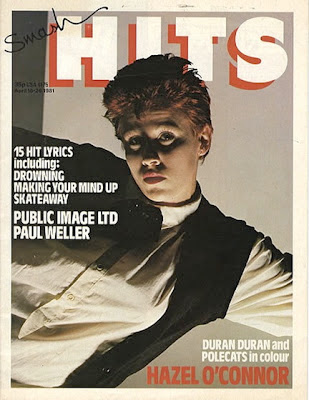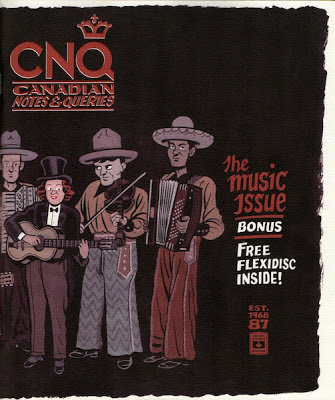Manhandled
Arthur Stringer and Russell Holman
London: Readers Library, [n.d]
Manhandled
Arthur Stringer and Russell Holman
New York: Grosset & Dunlap, 1924
Manhandled gives good example as to why it is that Arthur Stringer is so frowned upon by CanLit academics. It sprang not from the lush farmland that surrounds Chatham and London, Ontario, his duelling hometowns, but the offices of Famous Players-Lasky in downtown Manhattan. General Sales Manager Sidney R. Kent came up with the idea, Stringer was hired to add flesh, and then everything was passed on to screenwriter Frank Tuttle.
Our Ontarian was given $1000 for his efforts, along with the right to turn the tale into something of substance to sell to the glossies. The first the world saw of
Manhandled appeared as a 26,000-word short story in the March 22 and 29 issues of
The Saturday Evening Post. This novel is that short story, expanded by Russell Holman, a writer who had a talent for turning American silents into entertaining text.
Manhandled is a Gloria Swanson vehicle, written long before the word had ever been used in that sense. It tells the story of Tess McGuire, the orphaned daughter of a comedic vaudeville team, beginning with her childhood in Marysville, a picturesque, perfect New England town found only in popular fiction. Though raised by a cautious, conservative spinster aunt – think latter-day Marilla Cuthbert – Tess grows to become a beautiful, adventurous young woman who looks to live a life in the visual or dramatic arts. That pursuit takes her to New York, where she rents a room in the very same house as high school sweetheart Jim.
Now, don't you go spreading gossip; the most that happens between the two is a fleeting kiss. Jimmy aches to make Tess his wife, while she keeps putting him off :
"I wouldn't be satisfied with what you can give me – yet. I may be selfish, but it's better that I should tell you how I feel about it. It'll save us both a lot of pain."
Harsh.
Tess wants to make it on Broadway, but doesn't really try. After her one and only attempt at getting an agent, she accepts a job selling "soiled" lingerie in the bargain basement of Thorndyke's. Tess may be a subterranean shopgirl, but such is her beauty that she's soon drinking hootch with such well-known figures as artist Robert Brandt, Wall Street banker Luther Swett, bestselling author Carl Garretson and, of course, department store heir Chip Thorndyke.
As Jim, the rube boyfriend, works nights on a carburetor that might one day make him rich, Tess is wined, dined, danced and driven on innumerable automobile trips by men with wandering eyes and busy hands. Her only acting gig comes by accident, the result of imitating an exiled Russian aristocrat at a drunken party. A week later, passing herself off as countess "Madam Patovska", she's playing hostess, pouring tea at Manhattan's most exclusive dress shop.
Tess is forced to defend herself to Jim:
"Will you tell me what the successes in this town are founded on? As I begin to see it, they're founded on bluff. It's the best window-dresser that gets by. Ten chances to one your boss is getting by on the very same game. I know mine is. The mayor probably is. The lawyers and bankers and swells and business men certainly are. So, why shouldn't I do my little share of it?"
Garretson, "the jitney George Moore", is more understanding. "The forest is too thick for you to see the trees", he tells Tess. "But you're on your way through. And sellers in a brisk market don't stop to wash mud from their tulips."
Tess doesn't get it. She will... and we know she will. Sidney R. Kent's simple idea was to bring an oft-told story, that of a country girl at risk of being corrupted by the big city, to a new medium. His greatest contribution was a title that was sure to sell. CanLit academics will point out that it was a brisk market.
Trivia: Early in the novel, Tess goes to see a Gloria Swanson film and is
manhandled:
Tess would've enjoyed the picture, a Gloria Swanson society-drama, and shared Claire's raputurous remarks about the star's elaborate wardrobe, had Walter Hovey kept his obtrusive knees and his wandering hands more to himself.
Object: A small hardcover in thin brown boards, the Readers Library edition is printed on newsprint. Though touted a "Film Edition", the only element having to do with the Swanson vehicle is the dust jacket. The Grosset and Dunlap edition, on the other hand, features a generous eight plates of promotional shots.
Access: The Grosset & Dunlap and Readers Library editions were joined by a Hutchinson hardcover in 1925. Copies of all three are available online from booksellers in the United Kingdom, the United States, Ireland and Belgium. At £3.20, the cheapest is a Good copy,
sans jacket, of the Hutchinson edition. The most expensive - US$85 - is a Readers Library.
Nine of our university libraries have the Grosset & Dunlop edition, the University of Guelph has the Hutchinson, but no Canadian library has a copy of the Readers Library. Our public libraries, Library and Archives Canada included, have nothing at all.
Related post:
























































